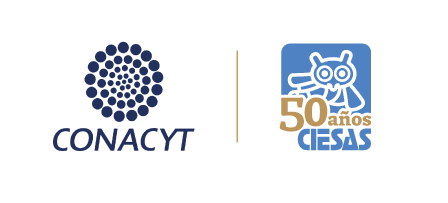JUVENTUDE E MIGRAÇÃO INDÍGENA ESTUDANTIL E AS POLÍTICAS PÚBLICAS DE INGRESSO E PERMANÊNCIA NA UNIVERSIDADE
DOI:
https://doi.org/10.26512/abyayala.v3i1.24708Palavras-chave:
Estudantes indígenas. Universidade. Juventude. MIgração. Ações afirmativas.Resumo
Ao observar a dinâmica do cotidiano acadêmico dos estudantes indígenas, decidi trilhar certos caminhos de interpretação que concernem ao pertencimento indígena, à experiência juvenil e às políticas de ações afirmativas voltadas para o ensino superior e direcionadas a esse público, no Brasil. Articular tais percepções me levou a refletir sobre políticas públicas para o ingresso e permanência no ensino superior e a consequente migração de jovens indígenas para centros urbanos, cujo foco da observação e, consequentemente, da análise, são os próprios estudantes universitários e o seu protagonismo para enfrentar as vicissitudes da vida universitária. Parto do suposto de que a partir do fenômeno da migração haverá a transcendência para outras realidades juvenis que passarão a vivenciar, por força das próprias trocas, materiais e simbólicas. Dessa forma, a minha intenção, foi problematizar as implicações da migração estudantil indígena para Salvador, ao ingressarem na Universidade Federal da Bahia (UFBA), identificando quais estratégias são utilizadas para a ocupação da cidade e quais as relações que persistem com as comunidades de pertencimento para a manutenção dos laços comunitários. No Brasil e na América Latina, essa nova forma de migração característica da juventude estudantil configurará um novo formato de ocupação das cidades pelas populações indígenas.
Referências
ALBUQUERQUE, Marcos Alexandre S. O regime imagético Pankararu (tradução intercultural na cidade de São Paulo) [tese]. Universidade Federal de Santa Catarina. Programa de Pós-Graduação em Antropologia Social. Florianópolis, 2011.
ARAÚJO, Ana Valéria Araújo (et alii). Povos Indígenas e a Lei dos “Brancos”: o direito à diferença. Brasília: Ministério da Educação, Secretaria de Educação Continuada, Alfabetização e Diversidade; LACED/Museu Nacional, 2006.
BOURDIEU, Pierre. Questões de sociologia. Rio de Janeiro: Marco Zero. 1983.
CARVALHO, José Jorge. Inclusão étnica e racial no Brasil. São Paulo: Attar Editorial, 2006.
CARVALHO, Priscila D. de. Ãn_d_i_o_s_ _a_ _C_i_d_a_d_e_, 2007. Disponível em: http://www.webbrasilindigena.org/?page_id=177. Acesso em: 19/01/2015.
DUARTE QUAPPER, Klaudio. ¿Juventud o Juventudes? Acerca de cómo mirar y remirar a las juventudes de nuestro continente. Revista Última Década, Nº 13, 2000, pp. 59-77. Disponível em: http://www.cidpa.cl/udecada/txt/decada13/art04.pdf.
ELIAS, Norbert. Os estabelecidos e os outsiders. Rio de Janeiro: Jorge Zahar, 2000.
FERNANDES, Florestan. Tiago Marques Aipobureu: um bororo marginal. In: Investigação etnológica no Brasil e outros ensaios. Petrópolis: Vozes, 1975.
GARCÃA ÁLVAREZ, Luis Fernando. Jóvenes indígenas en contextos metropolitanos. La construcción de lo juvenil en una comunidadmixtecaenel Área Metropolitana de Monterrey, Nuevo León. (Dissertação). Escuela Nacional de Antropología e História, Cidade do México, 2012.
GOMES, Ana Maria R.; MIRANDA, Shirley Aparecida de. ”A formação de professores indígenas na UFMG e os dilemas das “culturas” entre os Xacriabá e os Pataxó. ” In: CARNEIRO DA CUNHA, M.; CESARINO, P. N. (orgs). Políticas culturais e povos indígenas. São Paulo: Cultura Acadêmica, 2015, pp.455-84.
OLIVEIRA, João Pacheco. Viagens de ida, de volta e outras viagens: os movimentos migratórios e as sociedades indígenas. Travessias, jan./abr., 1996, pp. 5-10.
PALADINO, Mariana. Estudar e experimentar na cidade: Trajetórias sociais, escolarização e experiência urbana entre “Jovens” indígenas ticuna, Amazonas. (Tese). Programa de Pós-Graduação em Antropologia Social, Museu Nacional, Universidade Federal do Rio de Janeiro. 2006.
SANTOS, Jocélio Teles dos. Introdução. In: SANTOS, J. T. (org). Cotas nas universidades: análise dos processos de decisão. Salvador: CEAO, 2012, pp. 9-15.
SOUZA, Natelson Oliveira de. A HERANÇA DO MUNDO: história, etnicidade e conectividade entre jovens Xokó”. (Dissertação). Programa de Pós-Graduação em Antropologia, Universidade Federal da Bahia, Salvador, 2011.
TASSINARI, Antonellaet al. ”A presença de estudantes indígenas na Universidade Federal de Santa Catarina: um panorama a partir do Programa de Ações Afirmativas ”“ PAA/UFSC.” Século XXI. Revista de Ciências Sociais, v.3, no 1, jan./jun. 2013, pp.212-236.
TCHAM, Ismael. Estar, ficar e retornar: estudantes africanos no Brasil e os dilemas da migração. (Tese). Programa de Pós-graduação em Antropologia, Universidade de Pernambuco, 2016.
URTEAGA, Maritza Castro Pozo. La construcción juvenil de larealidad. Jóvenes mexicanos contemporaneous. UAM-Juan Pablos Editor, México, 2011, 188.
Downloads
Publicado
Edição
Seção
Licença
Copyright (c) 2019 Abya-yala: Revista sobre Acesso à Justiça e Direitos nas Américas

Este trabalho está licenciado sob uma licença Creative Commons Attribution-NonCommercial 4.0 International License.
O envio de contribuições para Abya Yala implica a cessão de direitos autorais e de publicação à Revista, observando a Atribuição-NãoComercial 4.0 Internacional (CC BY-NC 4.0) adotada.
O conteúdo dos textos submetidos à revista e por ela publicados serão de inteira responsabilidade de seus respectivos autores.
Copyright: https://creativecommons.org/licenses/by-nc/4.0/deed.pt_BR





 Este trabalho está licenciado como Atribuição Não Comercial 4.0 Internacional (CC BY-NC 4.0)
Este trabalho está licenciado como Atribuição Não Comercial 4.0 Internacional (CC BY-NC 4.0) 








